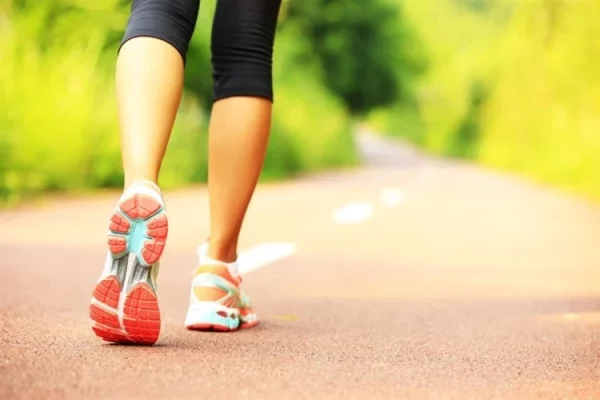Active recovery is a recommended method following high-intensity workouts to reduce muscle tension, improve blood circulation, and accelerate the recovery process. Unlike passive rest, active recovery involves maintaining light physical activities such as walking, swimming, or yoga, allowing the body to recover without placing additional strain on the muscles.
According to the American Council on Exercise (ACE), active recovery helps reduce lactic acid buildup in the muscles, increases blood flow, and eliminates metabolic waste from the body. This is especially important after intense workouts, as it minimizes prolonged muscle soreness and better prepares the body for the next training session. “Active recovery not only reduces fatigue but also lays the foundation for long-term performance improvement.”

Some popular and easy-to-implement forms of active recovery include:
- Walking: This simple activity requires no advanced techniques. A gentle walk boosts blood flow to the muscles without strain, while also improving mood and reducing stress.
- Swimming: Swimming is a low-impact exercise ideal for active recovery. A 2010 study found that swimming after workouts reduces inflammation and enhances muscle performance the following day.
- Light cycling: Cycling on a stationary bike or outdoors at a low intensity improves blood circulation without overloading recovering muscles. It’s a suitable option for those wanting to stay lightly active.
- Yoga: Yoga combines gentle stretching with breath control, helping alleviate soreness and improve body flexibility. Additionally, yoga aids in regulating blood glucose levels and effectively reduces stress.
- Foam rolling: Self-massage using a foam roller relieves muscle tightness, reduces soreness, and enhances range of motion. A 2019 study found this method to be particularly effective in alleviating delayed-onset muscle soreness (DOMS) after HIIT workouts.
“A gentle active recovery session, like yoga or walking, not only alleviates soreness but also helps maintain body flexibility, especially after intense workouts.”
However, if you experience injury symptoms such as swelling, sharp pain, or inflammation, active recovery may not be suitable. Instead, you should rest completely and apply the RICE method: Rest, Ice, Compression, and Elevation of the affected area to prevent the injury from worsening.
Active recovery is an essential part of any fitness routine. Instead of complete rest, maintaining light activities helps the body recover faster and reduces prolonged fatigue. By adopting this method, you can maintain balance, improve workout performance, and move closer to your health goals.


HPX24h > Fitness > Active Recovery: The Key to Reducing Soreness and Boosting Workout Performance
Top Reads from This Category
Fitness
Walking or Running: Which Is Better for Health and Weight Loss?
Fitness
Secrets to Building Muscle with Exercise: From Technique to Habit Maintenance
Fitness
What is the Ideal Heart Rate for Running?
Fitness
Fat-Burning Heart Rate: The Key to Optimizing Your Workout
Fitness
Post-Workout Muscle Soreness: Tips to Relieve Pain and Stay Motivated in Your Fitness Journey
Fitness
Swimming: The Golden Key to Physical and Mental Well-Being
Fitness
Physical Training: The Key to Preventing Nerve Damage During Chemotherapy
Discover New Topics
Healthy Eating
The optimal diet for leaky gut syndrome: Scientific solutions and practical advice
Science
The First Person to Experience Physical Sensations Through a Prosthetic Hand
Fitness
More Flexible – The Secret to Longevity?
Healthy Eating
Gallbladder Protection Through Diet: Expert Guide and Practical Tips
Healthy Eating
Foods That Support Depression Reduction: The Latest Scientific Nutritional Choices
Animals
Can Maggots Heal Wounds Faster Than Surgery?
Parenting Tips
Tips for Helping Preschoolers Develop Healthy Sleep Habits
Science
Modular Prosthetic Limb Technology: Breakthrough Discovery Enhances Motion for Disabled Individuals
Space
The Smallest Star System with Three Exoplanets Found by NASA’s Kepler
Science
Discover Blood Testing Technology Without a Visit to the Doctor
Parenting Tips
How to Talk to Your Child About Drugs Effectively
Science
Blood Test: A Breakthrough in Early Detection of Alzheimer’s Disease
Animals
The Secret Behind Turtle Eggs Hatching at the Same Time: A Fascinating Reason